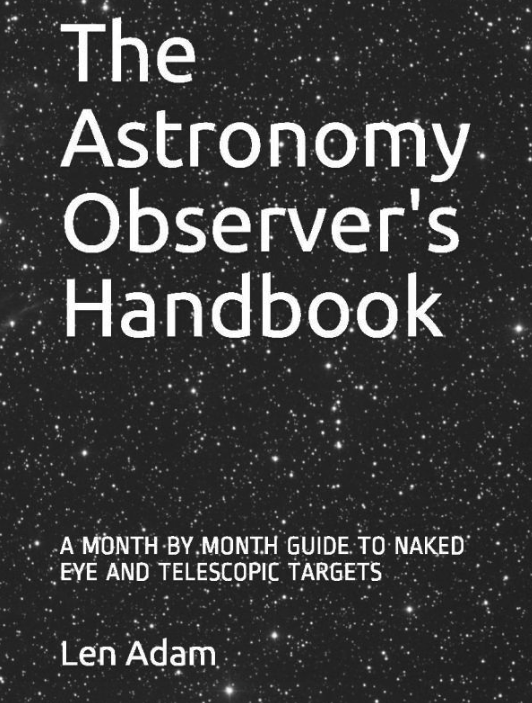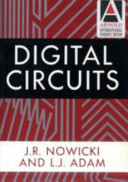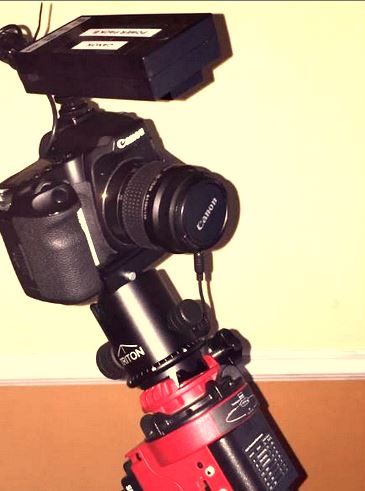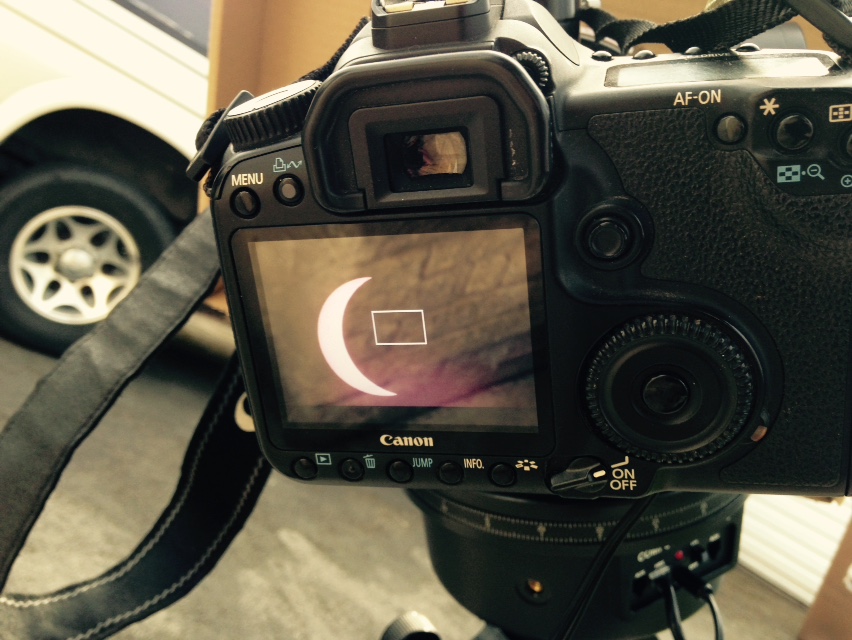Cloudy weather continues - no observing so I am continuing with the photometry work from yesterday.
Having obtained Transformation Coefficients for my photometry I need to go through the process of applying these to a photometric measurement which I will do today and the transformation later in the week.
The cluster that I used in yesterday's calculations include a variable star QX Cas. I will use this as a trial of my setup. Here it is on the image of NGC 7790. I downloaded its position from the General Catalogue of Variable Stars (GCVS) within VPhot on the AAVSO site.

I need a comparison star and a check star so I downloaded the set of comparison stars for this field from VPhot and specified one as the comparison star (blue) and set one to be the check star (red).

The signal and sky circles need to be adjusted to avoid interfering stars as much as possible. This is the result once the aperture, gap and sky annulus have been set.

This is a close up of QX Cas showing pixel values representing the number of photons hitting each pixel within the 30 second exposure time. The numbers on the right show how the pixel values are counted.

The number of pixels representing the star is 97 - this includes the pixels in the red "ring".
The total pixel value count is 258671 plus 6573 from the ring giving a total value of 265244.
VPhot does this calculation for you - you don't need to count the pixels and value as I have done - just this once!
VPhot does a similar calculation for the pixels in the sky (outer ring) annulus and summarises all of this in a table as below.

The Sky Annulus statistics give a median value of 192 counts (ADU) for each pixel in the annulus.
This is used to estimate the sky background count within the aperture.
Sky background = number of pixels in aperture X median sky count = 97 X 192 = 18624
This has to be subtracted from the aperture count to give the star count.
Star (signal) count = 265244 - 18624 = 246620 = I representing Intensity.
The simple process above is often represented as an equation

which makes it seem more complex than it is!!
So this represents how much light the star collected in 30 seconds but has to be represented as a magnitude.
The instrumental magnitude m is given by I = - 2.5Log (I/t)
where t is the exposure time in seconds
Dividing I by t gives 246620/30 = 8220.67
Getting the log (base 10) of this gives 3.91491
and multipling by -2.5 gives -9.873 which is the instrumental V magnitude of QX Cas
I see that this corresponds to the IM in the table - thank goodness!
So QX Cas has an IM of -9.873 but this needs to be compared with the I of the comparison star
VPhot calculates a figure of -7.866
The difference in magnitudes is -1.917
The given V magnitude of the comparison star is 12.117
The difference in magnitude is added to this to give the measured magnitude of QX Cas which is 10.200
The check star has a given magnitude of 12.452. It was measured at 12.449 - near enough to confirm a good result for QX Cas.
The 10.2 value for QX Cas is untransformed so different equipment could give a different result.
QX Cas is an eclipsing binary and has a period of about 6 days and varies in magnitude between 10.19 at brightest to 10.7 acording to the general documentation - but this paper informs me that it no longer has eclipses probably caused by a tertiary companion changing its orbital inclination.The value I obtained is the maximum brightness quoted which would be the permanent magnitude if eclipses have ceased in which case it is no longer a variable star.
Arne Henden the top variable star expert had this to say recently about QX Cas:
"That time of year (late September) is good for Cygnus and Cassiopeia. I like QX Cas, up near NGC 7790. It is a 10th magnitude blue binary. In the 1960's, it had a 0.5mag eclipse, but there is a third body in the system and for several decades, no hint of an eclipse has been present. However, I'd like to get a good light curve about once/year to keep an eye on the system - if the eclipses went away, then they should be back some day! That would be a simple target to do. With enough field to cover NGC7790, you also pick up several other variables for free, such as the cepheid variable CF Cas, so even if QX Cas is constant, you have plenty of other things to analyze.
QX Cas has a 6-day period; the NGC7790 cepheids are around 5 days; there are some delta scuti stars in the cluster with periods of a few hours. So any cadence works. If you picked a cadence that was optimal for the binary, then the usual rule of thumb is about 100 points per cycle, or an observation every 1.4 hours - that is, you don't have to sit on the field. However, it sounded like you wanted to set your telescope up and leave it alone, in which case a higher cadence won't hurt (and resolves other variables in the same field).
The problem with a 6d period is that it is impossible to see the daylight half of the light curve. You have to wait until the 0.00471d builds up to 0.471 days, or about 100 cycles (600 days). So you can cover one half of the light curve really good this year, and then wait until next year to cover the other half (or find a friend in China to get the other half of the light curve now!). So it is a good background project - get 6 night's worth of photometry and call it good for the year.
Yes, the objective is to catch an eclipse. If the eclipse "season" is just starting, the depth may be very shallow, so high precision is the rule - which is one reason why you might want higher cadence and then average several datasets together.
For objects like QX Cas, where an eclipse has not been seen in 50 years, don't trust any ephemeris. However, for most binary stars, a good rule of thumb is that the eclipse takes about 1/10 of the period; your 13 hours matches the 0.6days from that guideline, and so it would only take one more observer and 6 consecutive clear nights to cover enough of the cycle to rule out any eclipse."
There are three Cepheid Variables in NGC 7790 so I intend to have a look at these when time permits!
 Monday, October 6, 2014 at 1:59PM
Monday, October 6, 2014 at 1:59PM  [Your Name Here] | Comments Off |
[Your Name Here] | Comments Off | 










